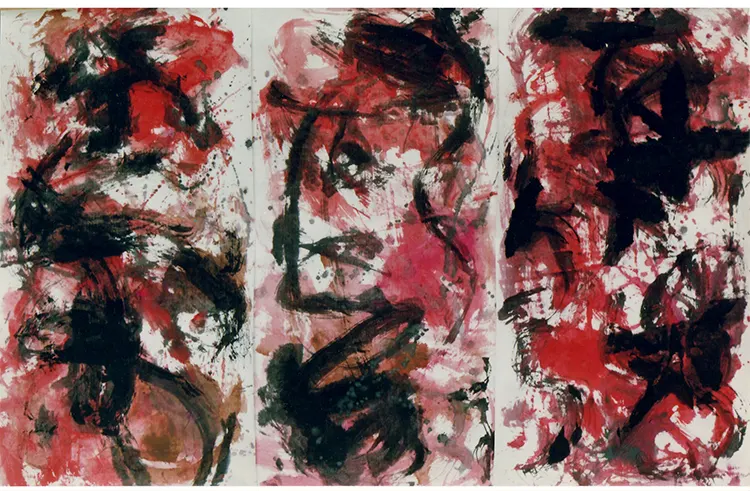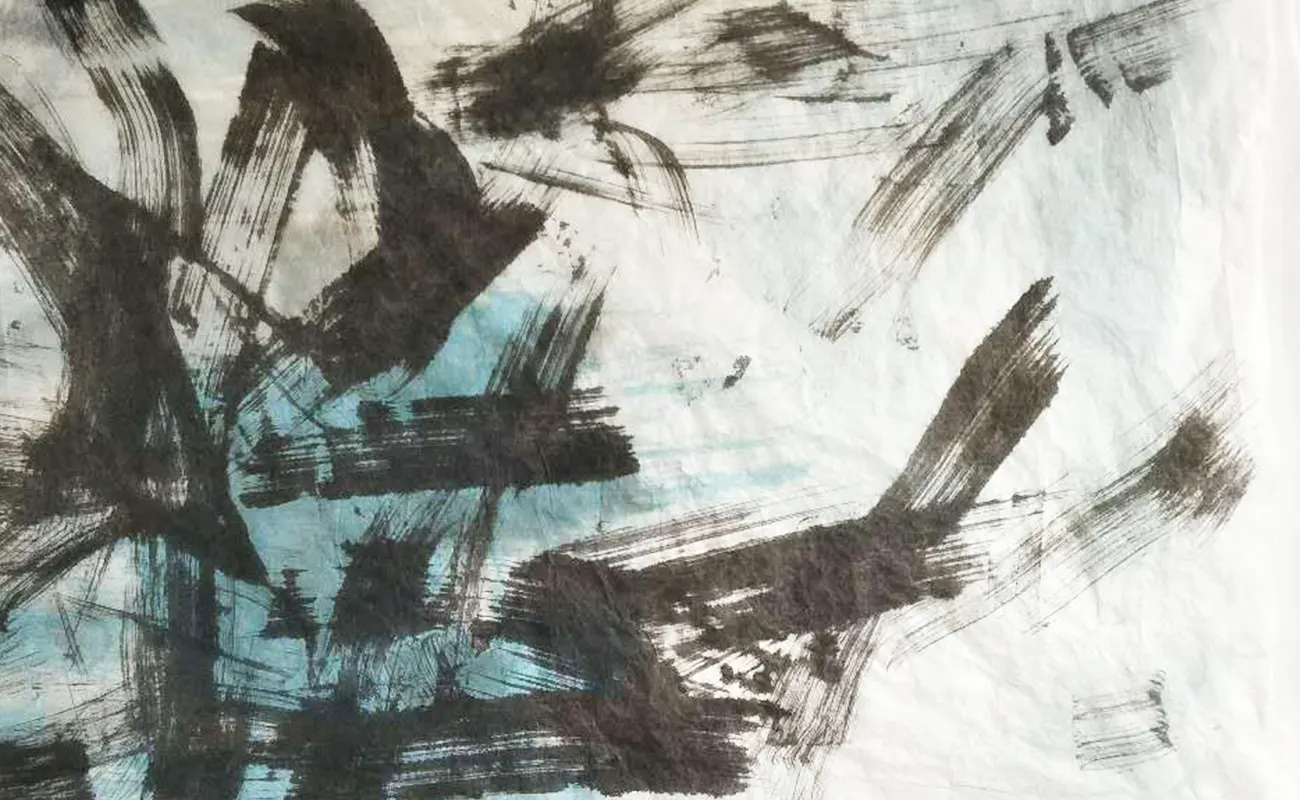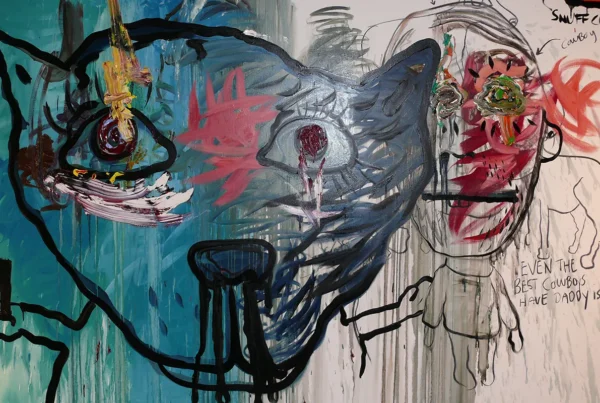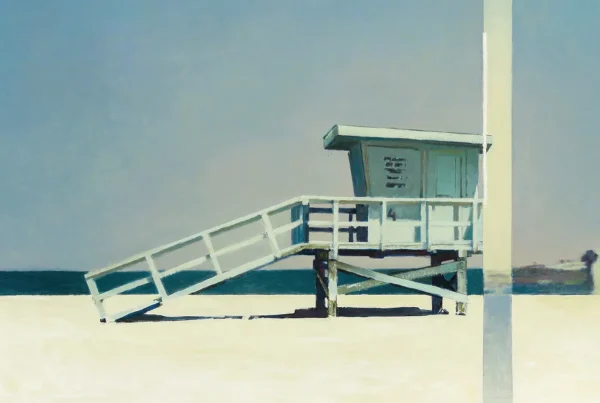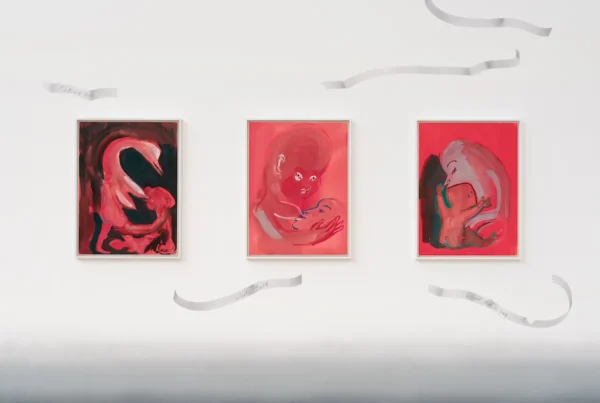“When I enter the state of drawing, I can forget all distractions!”
The Early Influence of Maternal Creativity
In the intricate tapestry of Ping Jie‘s artistic journey, the threads of his fascination with painting had been carefully spun during the early years of his childhood, a period that came to be greatly influenced by his mother. Notably, she was an adept practitioner of traditional screen carving and seal pattern carving, her mastery established within the confines of an arts and crafts workshop. It was within this maternal aura of creativity that Ping Jie’s nascent artistry began to take form, his first ventures into the realm of visual expression manifesting as woodcuts.
An air of innate talent was thus perceivable in the young Jie’s initial endeavours, evidenced by the fact that his artistic skills were largely self-taught. This period, before his formal induction into the Institute of Art and Design, was marked by self-discovery and exploration. It is here, unguided and unrestricted, that the foundation of his artistic sensibilities were moulded, reflective of the raw, yet profound sophistication that characterises his early work.
Upon the completion of his studies, the artist embarked on a significant career milestone. With a major in design under his belt, Ping moved beyond his roots in woodcut artistry and expanded his creative repertoire. His brush began to dance across canvases with a newfound fervor, unearthing the skill of drawing that would later form a pivotal cornerstone of his art. The transformation from a self-taught artist to a professional, whose work would enchant audiences globally, marked the commencement of Ping Jie’s ascent in the world of art. His journey, steeped in the essence of traditional craft and culminating in a design-oriented practice, beautifully encapsulates the evolution of an artist’s path.
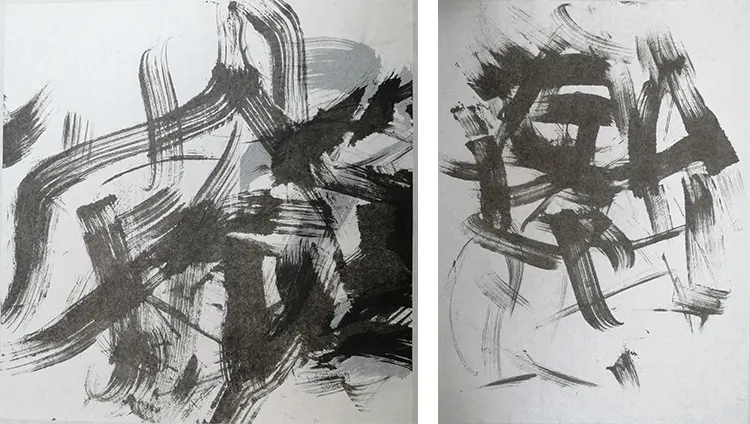
Embracing the Freedom of Abstract Ink Art
Holding his academic foundations in the realm of realistic style, Ping Jie embarked on his artistic journey. However, upon his matriculation, he found his creative instincts gravitating towards the vibrant world of abstract ink art, a medium that commanded an eclectic array of brushes, ink, and pigments to weave together visually striking, abstract canvases.
Submerging himself in this unique art form, Ping Jie pioneered a style characterized by free movement, a distinct aesthetic choice that resonated with his soul’s deepest stirrings. This new, liberating mode of expression allowed him to embrace and paint with an uninhibited, almost wild attitude, articulating his perceptions with raw, untamed vigor.
In this arena, Jie conjured an Eastern style spiritual space—a visual and metaphysical dimension seeped in the ethos of the Orient. His canvases became the locus of his soulful ruminations, where the Eastern spirit met the tenets of abstract expressionism.
His artistic oeuvre and stylistic maturation were deeply influenced by the works of two revolutionary figures in the global art landscape: Pablo Picasso and Jackson Pollock. These iconic artists, through their radical and diverse artistic languages, left an indelible impact on Jie. They showed him the vast potential of art, its ability to articulate a multitude of thoughts, feelings, and perspectives. Their influence nourished his aesthetic sensibilities, allowing him to expand his artistic vocabulary and range. Through their inspiration, Ping Jie learned to employ an array of expressive languages to give voice to his creative spirit.
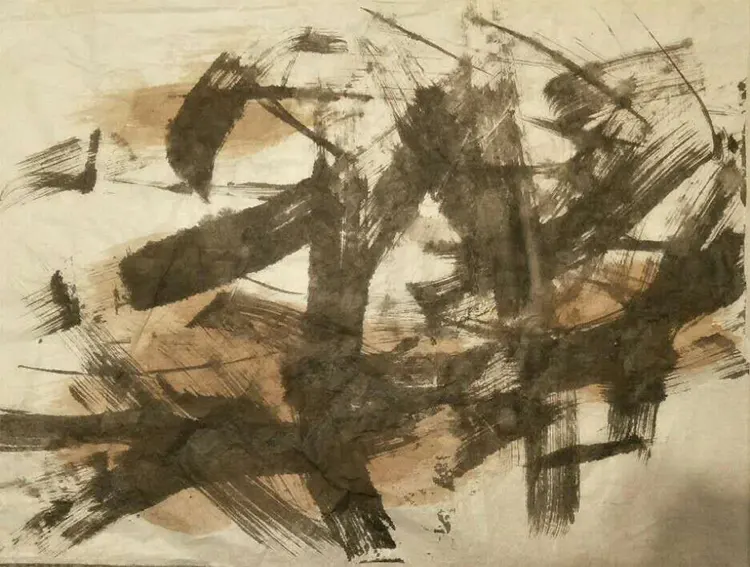
Finding Inspiration in Picasso’s “Guernica”
For Jie, his artistic influence is primarily on a macro scale, learning from the methods of masters like Picasso, rather than copying their unique styles. From Picasso’s iconic “Guernica”, Jie derives deep inspiration, discerning the master’s originality, integration of diverse elements, and its politically-charged narrative. Jie observes sharp socio-political themes, memorable symbolic motifs, and eloquent geometric structures within the grand layout of the painting. The strength of “Guernica”, for Jie, lies not only in its clear message but also in the balance of its elements and the pure harmony that emerges from an initially chaotic image, aspects that make Picasso’s work profoundly captivating for him.
Jie’s artistic process unfolds within a meticulously cultivated environment, an echo chamber that nurtures his creativity. Amongst the various stimuli that kindle his imagination, music and calligraphy posters play integral roles. Harmonic strains fill the air, providing a melodic backdrop that amplifies his artistic pursuits, while the calligraphy adorning his workspace serves as a constant reminder of his cultural heritage.
Upon entering the realm of artistic creation, Jie becomes completely immersed in his work. This state of flow, as some might term it, enables him to transcend the mundane world, shedding all external distractions. It is within this focused serenity that Jie explores the depths of his artistic potential, the intricate layers of his imagination. His relationship with his canvas is a testament to the power of art, its ability to render the artist an architect of new realities, echoing Picasso’s prowess in “Guernica.”
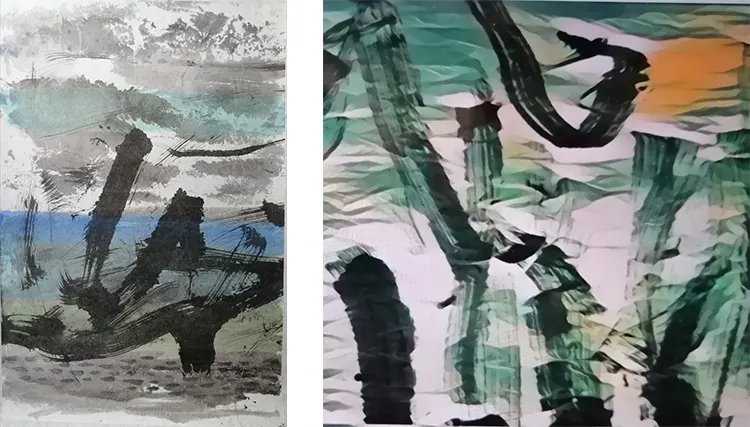
The Evolutionary Phases of Ping Jie’s Artistic Journey
The body of work crafted by artist Ping Jie unfolds across several distinct periods, each reflecting a unique evolution of his artistic technique and vision. Embarking initially on an exploration of the brush, Jie delved into the intricacies of cursive writing. This early phase was characterized by its profound embodiment of eastern charm, enthralling viewers with the artist’s adept control over the brush and the sophisticated refinement of his strokes.
In this cursive writing stage, the art of Ping Jie resonated with a rhythm and flow that conveyed an intimate understanding of the human psyche. It was a vibrant dance of ink on canvas that articulated the varying emotional states experienced by individuals. A tangible record of life experience, each stroke was imbued with a personal narrative, a testament to Jie’s ability to intertwine personal expression with the broader strokes of life’s tapestry.
As Jie’s artistic journey progressed, a shift in technique became evident. He transitioned from the solitary use of a brush to a more complex and layered application of multiple brushes. The results were an invigorating departure from his earlier works. This new stage ushered in the era of abstract symbols, each piece a labyrinth of visual cues that urged introspection and engagement from the observer.
The abstract symbols period marked a milestone in Jie’s artistic evolution. Within this stage, the artist forged a bridge between the tangible and intangible. His work evolved into a coded language, a lexicon of signs and symbols, an intriguing complexity that allowed viewers to transcend the boundaries of their own perceptions.
Most recently, Ping Jie has bravely ventured into the digital art landscape, creating abstract ink works as Non-Fungible Tokens (NFTs). This innovative approach marries his traditional artistic prowess with contemporary technology, signifying Jie’s commitment to both preserving and adapting artistic expression to the shifting sands of time.
As his journey unfolds, Ping Jie continues to create, demonstrating an unwavering dedication to his craft. His work – whether rooted in the traditional elegance of cursive writing, the cryptic allure of abstract symbols, or the pioneering landscape of digital art – remains a testament to his versatile talent, an enduring contribution to the art world that weaves a rich tapestry of human emotion, experience, and exploration.
